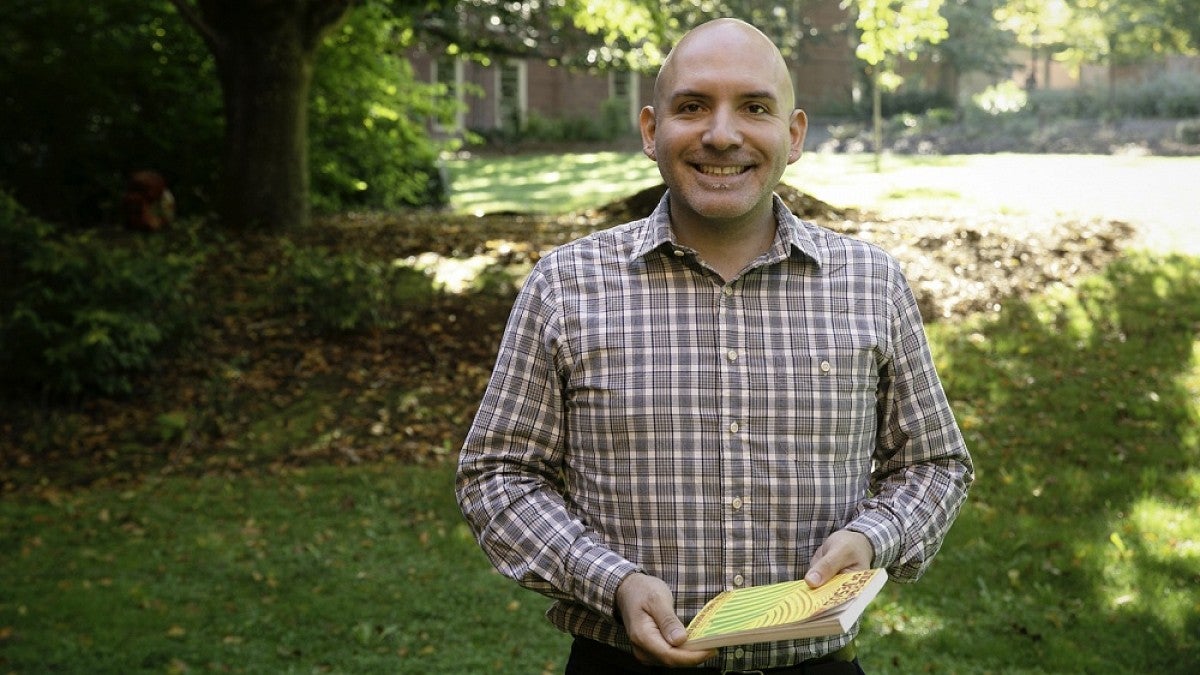The past informs the future. Such is especially the case for the Viramontes family.
With next week’s visit of writer and professor Helena María Viramontes, author of “Under the Feet of Jesus,” this year’s UO Common Reading book, the family’s history will be a topic of discussion for many on campus and in Eugene. The discussion will take on a more personal tone for College of Design’s John Arroyo.
Viramontes and Arroyo are cousins. Her story is his story also.
Arroyo is an assistant professor in engaging diverse communities for the School of Planning, Public Policy and Management. He said their family history inspired his work in planning, design and arts and culture research and projects, and more specifically, his interest in urban development, equity, land use and environmental justice, and how those issues intersect with underrepresented populations and migration.
“The novel deals with the issues of immigrant oppression, citizenship and belonging,” Arroyo said. “There are large newcomer populations settling in areas of the U.S. that are not prepared to help them or choose not to help or humanize them, and that comes with grave costs for the entire community.”
Arroyo grew up in East Los Angeles, raised by a mother who was a cousin and best friend with Viramontes when they were young. His mother remained in the same neighborhood she grew up in, raising Arroyo and his siblings while working as a teacher in the Los Angeles Unified School District for 35 years.
Surrounded by a family of storytellers, as he describes them, the intersection of Arroyo’s past with his future solidified during his undergraduate work at the University of Southern California. It was there that he wove together his interest in telling stories through study of journalism and communication combined with an interest urban planning.
He dove more deeply into the connections between migration and urban planning and design while conducting his master’s and doctoral work at the Massachusetts Institute of Technology. This included how recent Mexican migrant communities, particularly in new immigrant gateways, transform aspects of the built environment such as housing, transportation and centers of commerce amid local-level anti-immigration policies.
While at MIT, Arroyo was mentored by Peggy Levitt, a professor and sociology department chair at Wellesley College and author of “The Transnational Villagers.” Levitt, who co-directs the Politics and Social Change Workshop, was “like a mom” to Arroyo during the time they worked together. Upon his graduation, he gave Levitt a copy of “Under the Feet of Jesus” as a thank you for her tremendous support.
“I said to her, ‘Here’s the thing about this book. It’s not just a great story; it’s the story of my family and my own family’s background with immigration justice issues,’” Arroyo told Levitt. “It was then that she told me that it made sense how I came to the work I do and the understanding I have for the work.”
Both Arroyo and Viramontes are eagerly anticipating their reunion on Oct. 21. She will be speaking to his class in the morning, and he will attend her public talk in the Erb Memorial Union that afternoon and at the Eugene Public Library the next evening.
“I am looking forward to seeing him again and meeting his husband,” Viramontes said. “This is going to be very special for me.”
“Under the Feet of Jesus” tells the story of Estrella, the daughter of a migrant farm worker named Petra, Arroyo’s grandmother, who is forced into living in temporary farm worker camps and laboring in the fields to feed her children.
“One of the most enduring lessons from this book is that, even though it was written in the ’90s, it shows how the topic of immigration and human rights is a relevant and influential cornerstone of society,” Arroyo said. “It really makes us think about environmental justice, public health and housing, issues that resonate with everyone. This story and stories like these make us rethink how we treat people with compassion and have empathy for the people the novel’s characters represent in our current day.”
—By Kimberly Lamke Calderon, University Communications


